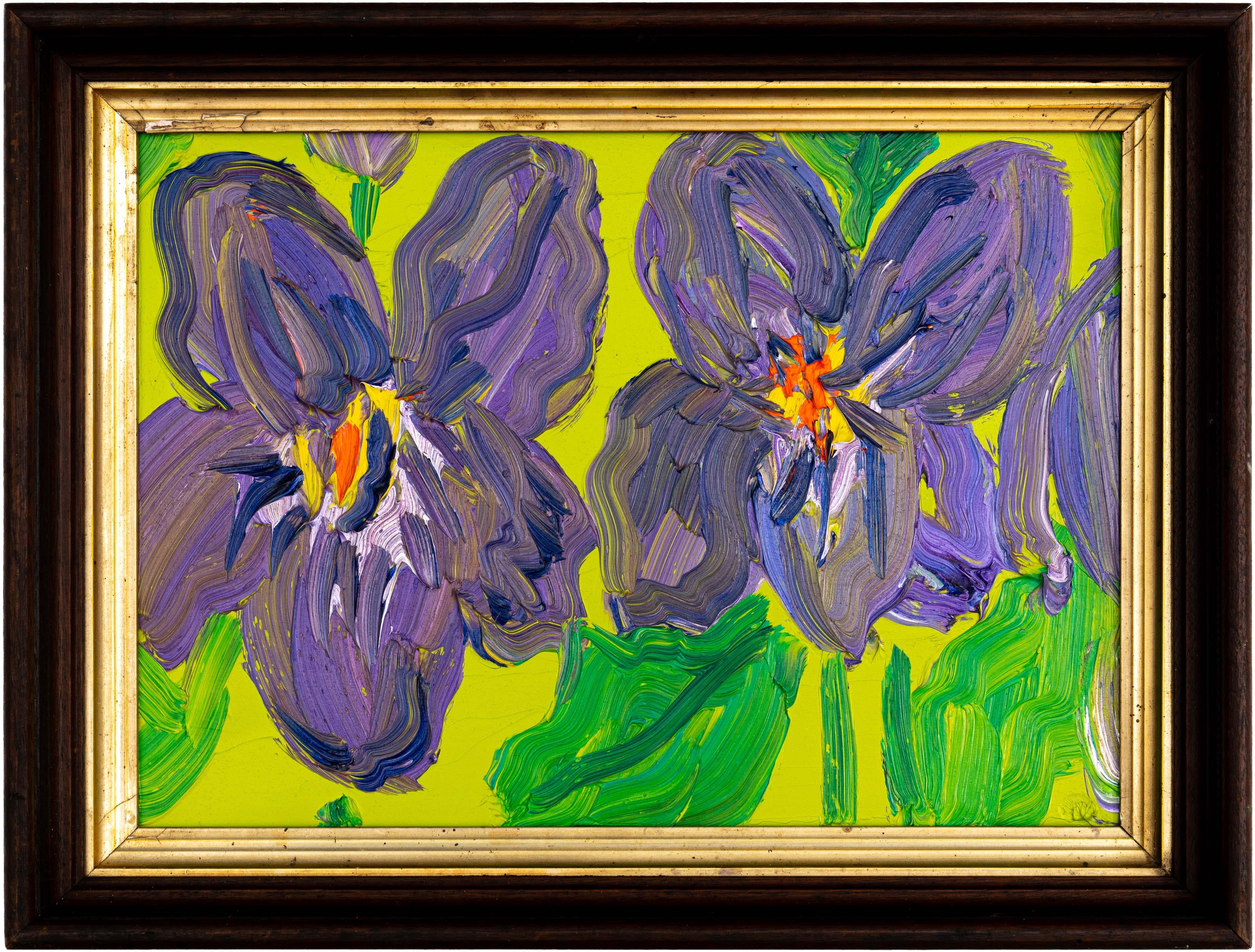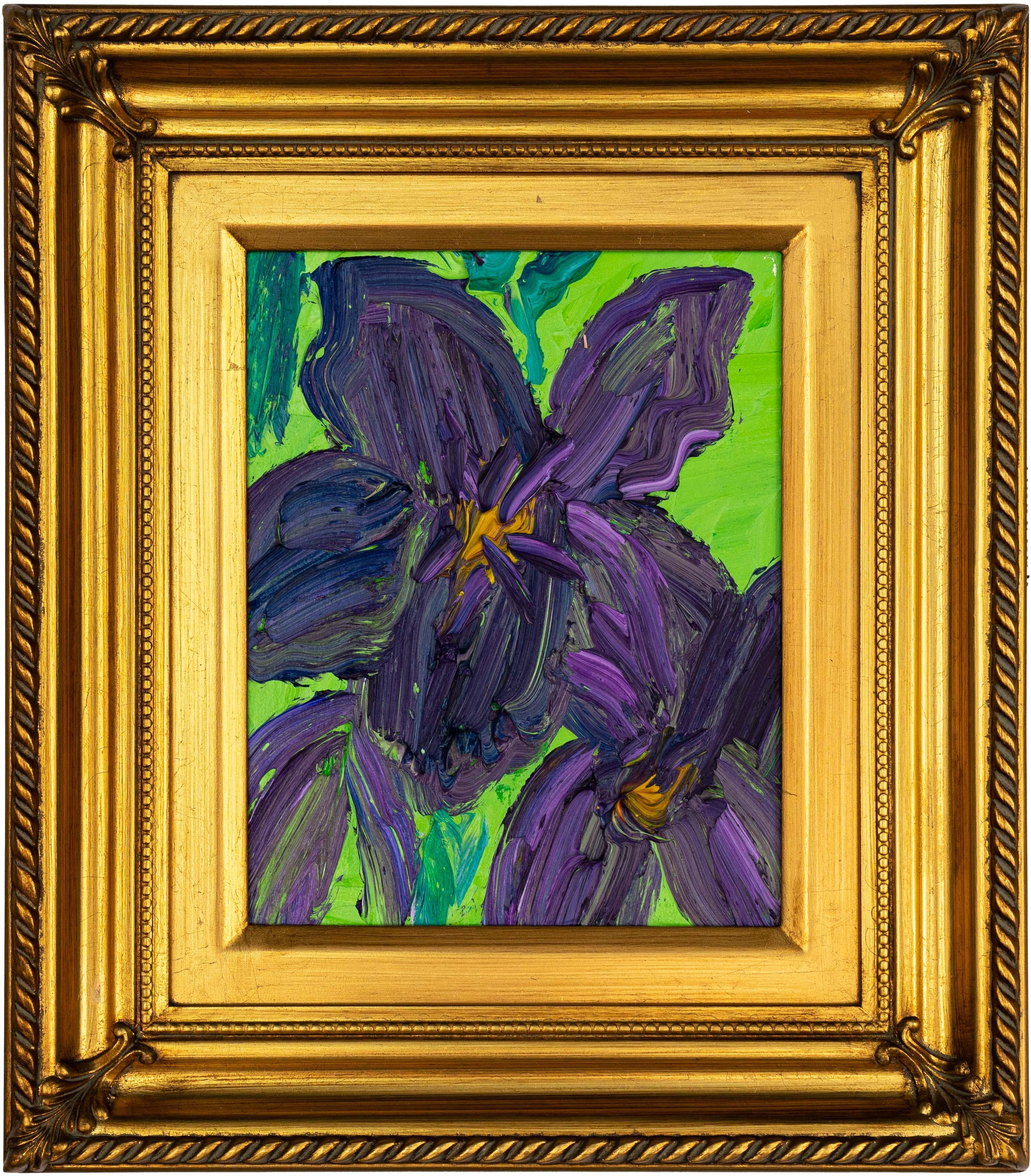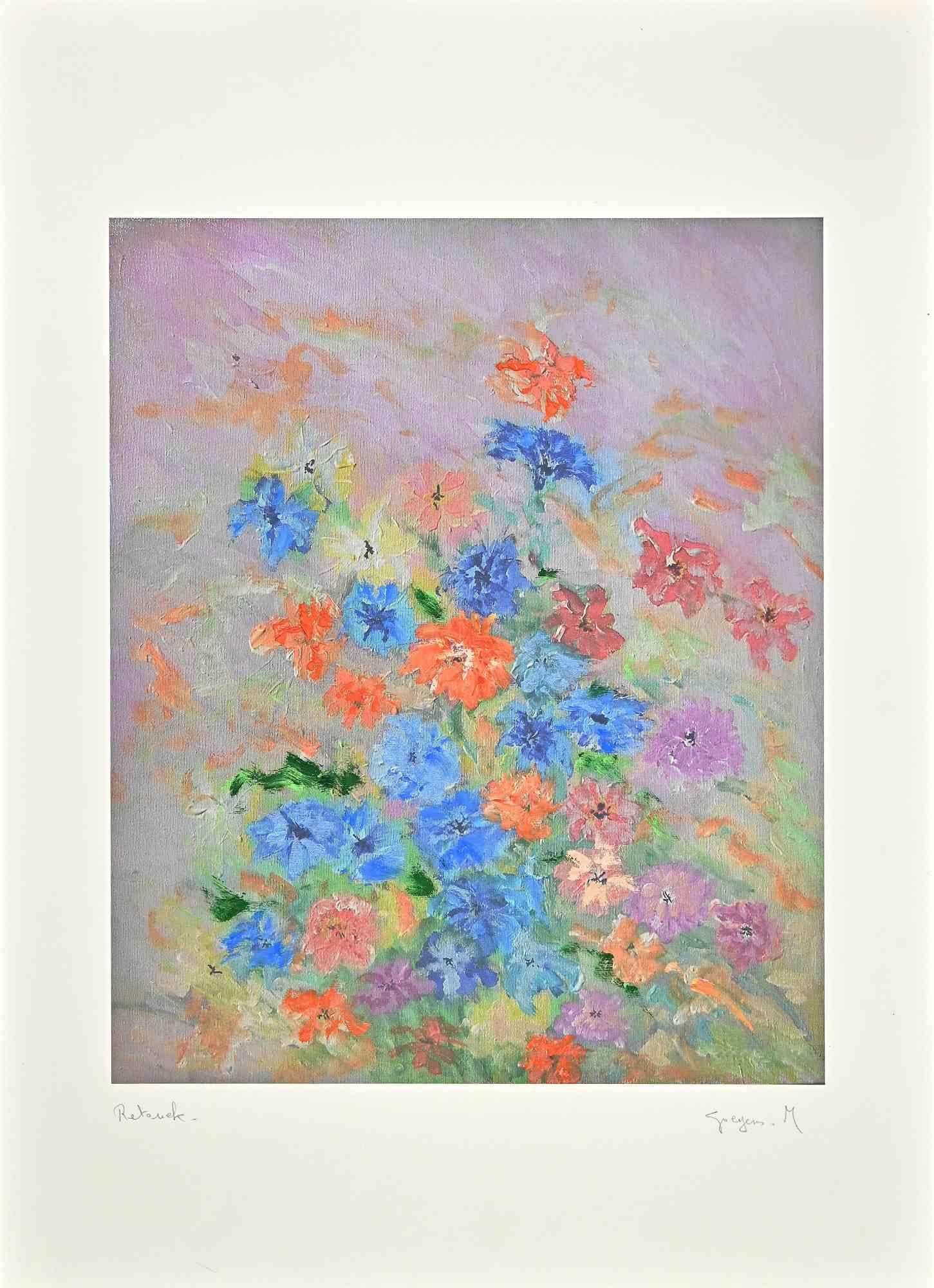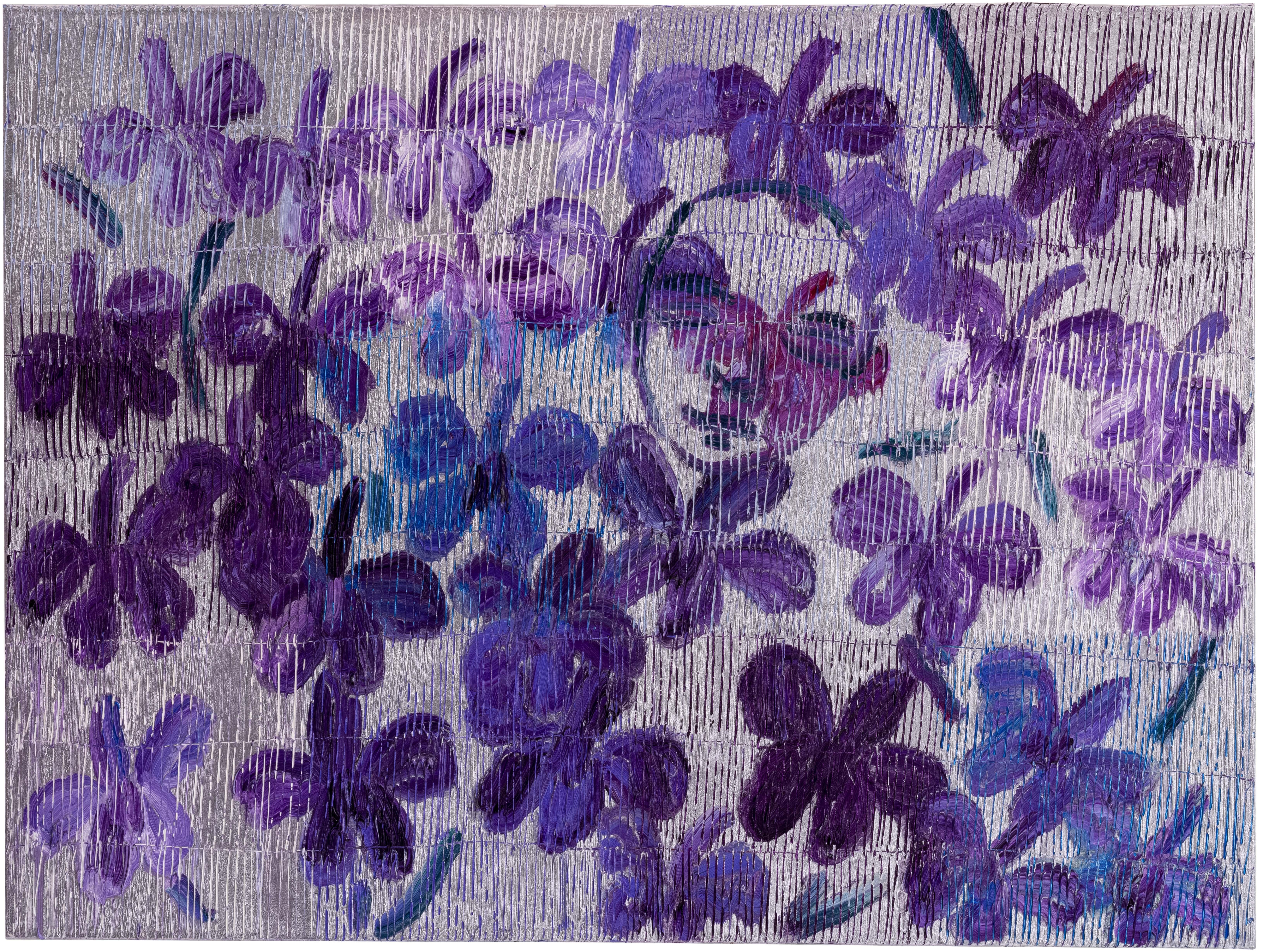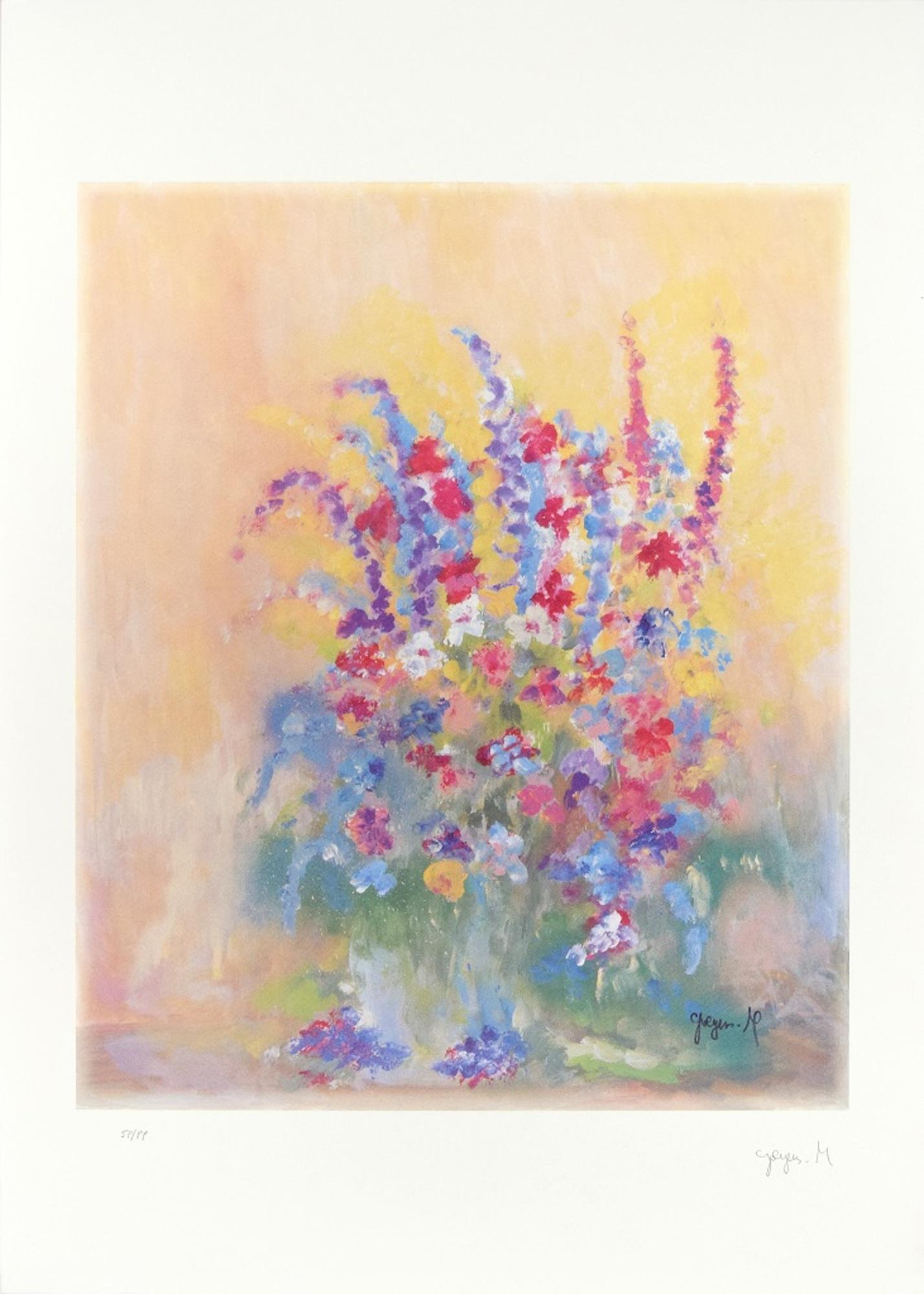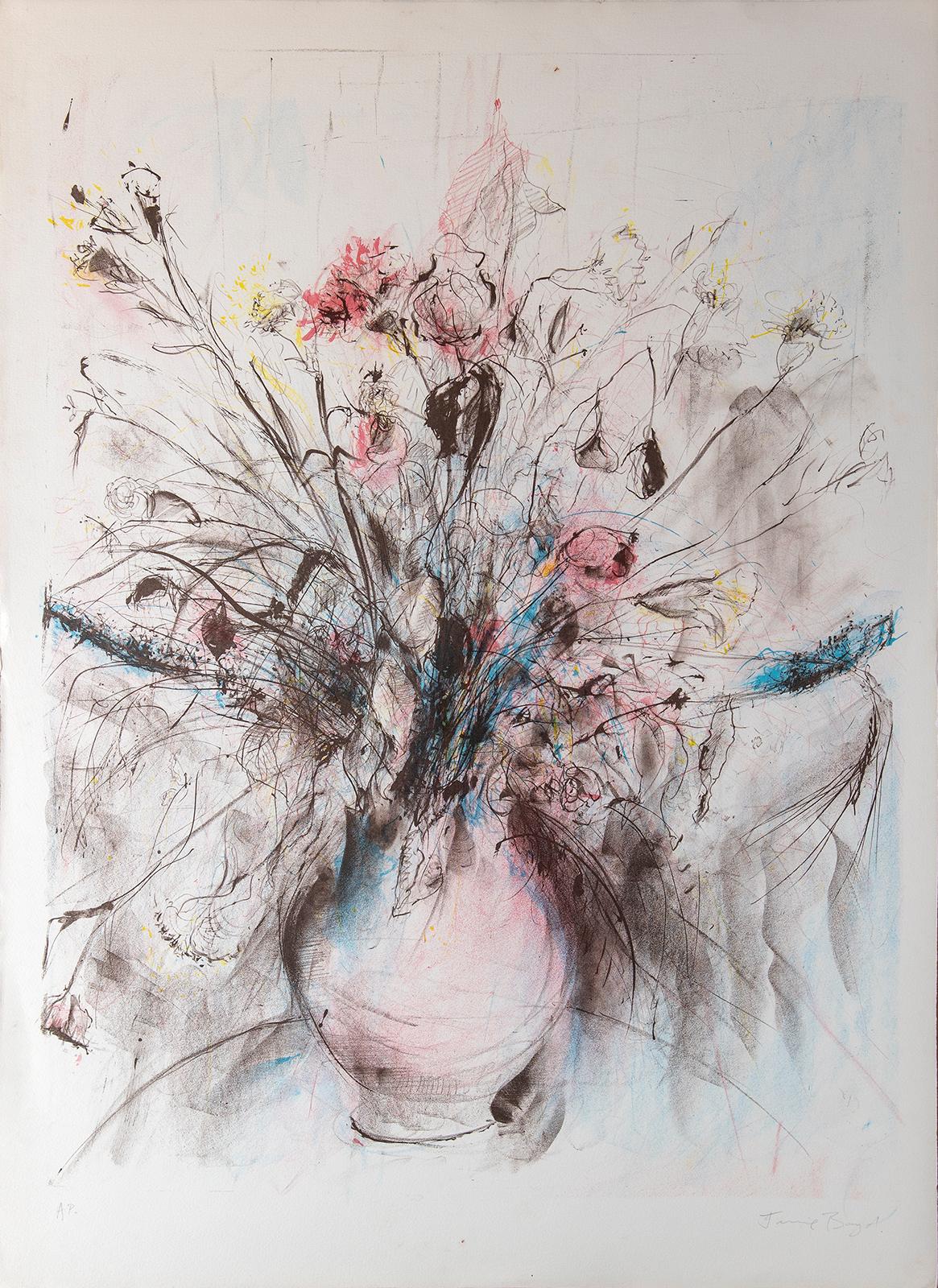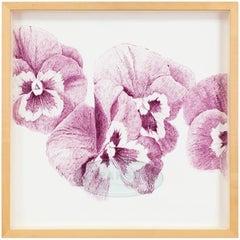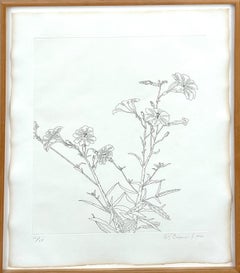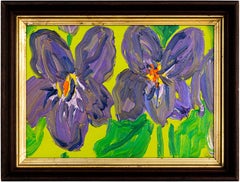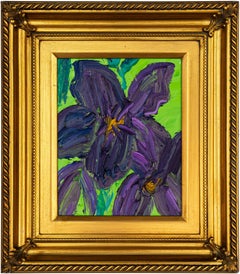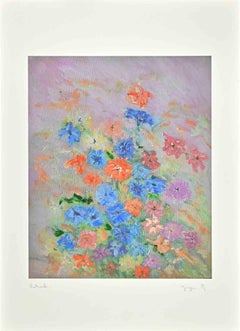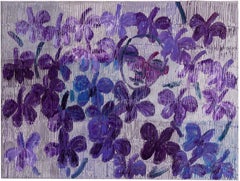Items Similar to Violets
Want more images or videos?
Request additional images or videos from the seller
1 of 8
Joseph DomjanViolets1957
1957
$1,200
£903.24
€1,038.88
CA$1,688.49
A$1,851.13
CHF 970.15
MX$22,480.03
NOK 12,103.80
SEK 11,454.61
DKK 7,753.96
About the Item
Born in Budapest in 1907, he had a humble upbringing and a passion for the arts. Shortly after the Hungarian Revolution broke out in 1956, Domján was invited to showcase his work in New York; given both the circumstances and opportunities, he readily accepted. Eventually, with his wife and children, he settled in Tuxedo Park. Here, he established the Domján Studio and where lived until his passing in 1992. In his early years, and during the Great Depression, Domján toured Europe with the desire to be engulfed by art. Previously, much of his time had been consumed with the work of both an engine fitter and foundry worker. After testing the waters of over 20 different professions, he discovered his passion in the arts. Later, during his European tour, he earned his way by selling a variety of works including both paintings and sketches. Post-depression, he returned to Hungry where he studied seven years at the Budapest Academy of Arts.
Having spent an earlier portion of his life as a painter, Domján created his first woodcut in 1947 by using oil paint as opposed to printer’s ink. The result was stunning. This technique, becoming his signature style, would later set him apart from others within the trade. To create his pieces, Domján applied rich color, layer by layer, and lays claim to having “succeeded in bringing to the world something that had not existed before.”
Ultimately, each print became three dimensional and gave the appearance of a painting. His technique has gained him international merit as well as the honor of receiving China’s “Master of the Color Wooodcut” award, a recognition given only once every century. The inspiration behind many of Domján’s woodcuts, coupled with his love of nature, is derived from Hungary’s brilliant folklore. The intricacy of his design is certainly his prominent element; however, their subtle coloring and abstract images contribute to his
unique style.
For the 59th Anniversary of composer Béla Bartók’s opera, Duke Bluebeard’s Castle, Domján used the opera’s profound imagery to create a series of woodcuts. The work included an ominous castle, coiled snakes, smirking masks, elusive zodiac symbols, and the story’s forbidden key. In doing so, Domján was able to weave traditional folklore components into a fantastic piece of modernized art. His work is not only expressive of Hungarian folklore but is also heavily influenced by his European travels. Domján, through his woodcuts, has blended elements of nature, history, folk art and legends with a variety of cultural experiences. Within these elements
Domján has infused his unique passion and created pieces which will remain timeless. Domján is now associated with five hundred exhibitions and 130 museums on four continents, including the Metropolitan Museum of Art in New York, the Tate in London and Mingei International. All of these facilities house pieces of his work while a museum in Sárospatak, Hungary bears his name.
Through his extraordinary art, fantastic colors and profuse texture, Jozsef Domján has captured a Hungarian essence in such a way that it is universally appreciated.
- Creator:Joseph Domjan (1907 - 1992, Hungarian)
- Creation Year:1957
- Dimensions:Height: 22.25 in (56.52 cm)Width: 19.8 in (50.3 cm)
- Medium:
- Period:
- Condition:Minor wear and tear.
- Gallery Location:Surfside, FL
- Reference Number:1stDibs: LU38210989022
About the Seller
4.9
Platinum Seller
Premium sellers with a 4.7+ rating and 24-hour response times
Established in 1995
1stDibs seller since 2014
1,809 sales on 1stDibs
Typical response time: 1 hour
- ShippingRetrieving quote...Shipping from: Surfside, FL
- Return Policy
Authenticity Guarantee
In the unlikely event there’s an issue with an item’s authenticity, contact us within 1 year for a full refund. DetailsMoney-Back Guarantee
If your item is not as described, is damaged in transit, or does not arrive, contact us within 7 days for a full refund. Details24-Hour Cancellation
You have a 24-hour grace period in which to reconsider your purchase, with no questions asked.Vetted Professional Sellers
Our world-class sellers must adhere to strict standards for service and quality, maintaining the integrity of our listings.Price-Match Guarantee
If you find that a seller listed the same item for a lower price elsewhere, we’ll match it.Trusted Global Delivery
Our best-in-class carrier network provides specialized shipping options worldwide, including custom delivery.More From This Seller
View AllBird & Young
By Joseph Domjan
Located in Surfside, FL
Born in Budapest in 1907, he had a humble upbringing and a passion for the arts. Shortly after the Hungarian Revolution broke out in 1956, Domján was invited to showcase his work in New York; given both the circumstances and opportunities, he readily accepted. Eventually, with his wife and children, he settled in Tuxedo Park. Here, he established the Domján Studio and where lived until his passing in 1992. In his early years, and during the Great Depression, Domján toured Europe with the desire to be engulfed by art. Previously, much of his time had been consumed with the work of both an engine fitter and foundry worker. After testing the waters of over 20 different professions, he discovered his passion in the arts. Later, during his European tour, he earned his way by selling a variety of works including both paintings and sketches. Post-depression, he returned to Hungry where he studied seven years at the Budapest Academy of Arts.
Having spent an earlier portion of his life as a painter, Domján created his first woodcut in 1947 by using oil paint as opposed to printer’s ink. The result was stunning. This technique, becoming his signature style, would later set him apart from others within the trade. To create his pieces, Domján applied rich color, layer by layer, and lays claim to having “succeeded in bringing to the world something that had not existed before.”
Ultimately, each print became three dimensional and gave the appearance of a painting. His technique has gained him international merit as well as the honor of receiving China’s “Master of the Color Wooodcut” award, a recognition given only once every century. The inspiration behind many of Domján’s woodcuts, coupled with his love of nature, is derived from Hungary’s brilliant folklore. The intricacy of his design is certainly his prominent element; however, their subtle coloring and abstract images contribute to his
unique style.
For the 59th Anniversary of composer Béla Bartók’s opera, Duke Bluebeard’s Castle, Domján used the opera’s profound imagery to create a series of woodcuts. The work included an ominous castle, coiled snakes, smirking masks, elusive zodiac symbols, and the story’s forbidden key. In doing so, Domján was able to weave traditional folklore components into a fantastic piece of modernized art. His work is not only expressive of Hungarian folklore...
Category
20th Century Landscape Prints
Materials
Mixed Media, Wood Panel
THE NAME OF THE FLOWER: PANSY “JOKER VIOLA-GOLD”
By Ken Aptekar
Located in Surfside, FL
Genre: Contemporary
Subject: Nature
Medium: Ink, Sandblasted Glass,
Surface: Paper
Country: United States
Dimensions: 20" x 20"
Dimensions w/Frame: 21" x 21" x 2"
KEN APTEKAR (b.19...
Category
Late 20th Century Conceptual Mixed Media
Materials
Glass, Ink
Zen Minimalist Flowers Etching American Modernist Ed Baynard Pop Art Print
By Ed Baynard
Located in Surfside, FL
ED BAYNARD (American, 1940-2016)
Flowers, Flowers in a Vase, Etching.
1979/1980,
Hand signed, dated l.r.,
Hand numbered from small edition 12/24,
Dimensions: 23 by 19 in. Framed 25 by 21 in
Born in Washington, D.C. in 1940. Raised in Washington, D.C. and newly graduated from high school, he flew to Europe living off and on in Paris and London. During this time, he designed costumes for Jimi Hendrix, worked as a graphic designer for the Beatles as well as Elizabeth Taylor and Richard Burton. Returning to New York, he dedicated his life to art after a surprise success with his first show in 1971 at the Willard Gallery in NYC. Ed's images are Zen-like in their simplicity and grace rendered in a flat, graphic style that recalls Japanese Ukiyo-e prints. His watercolors are luminous, like the rest of his representations regardless of the medium. The Japanese inspired ukiyo-e style woodblock prints and lithograph works he created at Tyler Graphics in 1980 contain a 20th century "floating world" sensibility. Ed's wish was to bring harmony, color, and a meditative stillness to this chaotic planet. He did so in a gentle and powerful way, always as an expression of his deep gratitude for the love and beauty, friendship, and concerns he held dearest. His first solo exhibition was in 1971 at New York's legendary Willard Gallery on the recommendation of Agnes Martin. Baynard went on to have exhibitions at galleries including Betty Parsons Gallery, New York (1973); Marian Goodman Gallery, New York (1977); John Berggruen Gallery, San Francisco (1980); and Barbara Gladstone Gallery, New York (1980/81).. Baynard manages to retain a simplicity of form inspired by a love of Japanese Woodblock prints. His new works reflect the same poetry of his earlier paintings, retaining his stylized compositions with their Zen like minimalism and Oriental calm, along with a new sense of rhythm and movement. Baynard uses familiar themes such as flowers, plants, pots, and vases, incorporating them into his delicate watercolor still lifes, thus creating stunning visual feasts. He was included in the 1972 Landscape exhibition at MoMA NY alone with other luminaries James Boynton...
Category
1980s American Modern Still-life Prints
Materials
Etching
"Untitled"
By Dan Reisinger
Located in Surfside, FL
Reisinger was born in Kanjiža, Serbia, into a family of painters and decorators active in Austria-Hungary and the Balkans. Most family members died in the Holocaust, including his father. As a teenager, he became active in the Partisan Pioneer Brigade and, with his mother and stepfather, immigrated to Israel in 1949. Reisinger initially lived in a transit camp and then worked as a house painter in order to earn money from almost any source. In 1950 at age 16, he was accepted as a student—its youngest up to the time—at the Bezalel Academy of Art and Design in Jerusalem, there to 1954.
During mandatory service in the Israeli Air Force from 1954, he was the art director of its books and other publications. While there, he attended a class on postage-stamp design taught by Abram Games, who became his mentor and friend. Subsequently, he traveled, studied, and worked in Europe: from 1957 in Brussels and then onto London where, 1964–66, studied stage and three-dimensional design at the Central School of Art and Design, designed posters for Britain's Royal Mail, and worked for other clients while making intermittent visits to Israel. Then in 1966, he returned permanently to Israel and established a studio in Tel Aviv and today in Giv'atayim.
His work has been included in numerous international group and one-person exhibitions. A large number of social-, political-, and cultural-theme posters and other graphic design, such as calendars, packaging, and more than 150 logos are superior to much of his fine art. He designed a new logo for El Al airlines (1972), and the 50-meter-long aluminum-cast relief (1978) of a biblical quotation in Hebrew on the exterior of the Yad Vashem, Israel's official museum/memorial to Holocaust victims, in Jerusalem. He has also designed logos for the Tel Aviv Museum of Arts, Tefen Museum of Arts, and Habima Theater (הבימה - התיאטרון הלאומי) and the symbol and posters of the 9th-15th Maccabiah Games (מַכַּבִּיָּה).
His widely published self-produced “Again?” poster (1993) features a Nazi swastika (which Reisinger incorrectly made to face left) breaks apart to 5 pointed red Star of soviet union in reference to the possible dreaded repeat of the Holocaust. The influences on his work—itself more widely focused than solely on social and political issues—have come from colorists, Minimalists, Constructivists, and humorists. He claims one of his more significant contributions has been to stretch the visual and communicative possibilities of Hebrew letters through his symbols and logos. Reisinger is one of Israel's most-accomplished graphic designers; the others include Franz Kraus...
Category
20th Century Contemporary Abstract Prints
Materials
Screen
Offset Lithograph Modernist Print of Bold Vibrant Flowers, Plate Signed
Located in Surfside, FL
Alfred Cohenartist, 1920-2001
Brilliant colourist famed for portraits of the stars and landscapes
Although his professed heroes were Rembrandt and Picasso...
Category
20th Century Modern Still-life Prints
Materials
Offset
"Untitled"
By Tom Baldwin
Located in Surfside, FL
Recently graduated from Pasadena’s legendary Art Center College of Design, Tom Baldwin created the series of inkjet prints Japanese Gardens in 1996 on his computer, using then-nascent graphics technology to "paint" his images on the computer screen. Baldwin embraced this technology and its accompanying printing process not just for the speed and ease of their use, but because the artist could achieve the absolute flatness that the principles of modernism preached but ultimately--because of the limitations of their tools--never reached. These colorful, semi-abstracted views of Japanese temple landscapes subtly, but radically redefine picture space. Baldwin shifts fore and backgrounds, giving equal weight to skies and hillsides. Endowing a lowly bush with a vibrant purple or orange might cause it to pop out of proportion, but ultimately lends balance and stability to the work itself, in short, returning the composition to its original, harmonious whole in keeping with the subject matter. these original prints employ a color scheme that seems more reminiscent of 1980s Japanese pop art beer advertisements...
Category
20th Century Abstract Prints
Materials
Screen
You May Also Like
Hunt Slonem "Violets" Florals
By Hunt Slonem
Located in Boston, MA
Artist: Slonem, Hunt
Title: Violets
Date: 2024
Medium: Oil on wood
Unframed Dimensions: 10" x 14"
Framed Dimensions: 12.5" x 16.5"
Signature: Signed by Artist on Verso
Edition...
Category
2010s Contemporary Paintings
Materials
Oil
Hunt Slonem "Violets Charlotte" Floral
By Hunt Slonem
Located in Boston, MA
Artist: Slonem, Hunt
Title: Violets Charlotte
Date: 2024
Medium: Oil on wood
Unframed Dimensions: 10" x 8"
Framed Dimensions: 16" x 14"
Signature: Signed by Artist on Verso
Ed...
Category
2010s Contemporary Paintings
Materials
Oil
Flowers - Digigrapgh by Martine Goeyens - Late 20th Century
By Martine Goeyens
Located in Roma, IT
Flowers is a very colorful artwork realized by Martine Goyens in the late 20th Century.
Digigraph print.
Hand-signed.
Good conditions.
The artwork id depicted through confident s...
Category
1990s Contemporary Landscape Prints
Materials
Digital
Hunt Slonem "Rothchild's Vandas" Floral
By Hunt Slonem
Located in Boston, MA
Artist: Slonem, Hunt
Title: Rotchild's Vandas
Date: 2025
Medium: Oil on canvas
Unframed Dimensions: 36" x 48"
Signature: Signed by Artist on Verso
Edition: Unique
Hunt Slonem...
Category
2010s Contemporary Paintings
Materials
Oil
Les Fleurs - Lithograph by Martine Goeyens - 21st Century
By Martine Goeyens
Located in Roma, IT
Les Fleures is an original colored lithograph on cream-colored paper print realized in 2010 by Martine Goeyens.
The contemporary artwork, representing a wonderful still life of flow...
Category
2010s Contemporary Landscape Prints
Materials
Lithograph
Flowers
Located in Llanbrynmair, GB
’Flowers’
By Jamie Boyd
Medium - Lithograph
Edition - AP
Signed - Yes
Size - 635mm x 870mm
Date - c1975
Condition - Very good. 9 out of 10.
Colour of print may not be accurate when...
Category
1970s Contemporary Landscape Prints
Materials
Lithograph
$442 Sale Price
20% Off
More Ways To Browse
Gordon Grant Lithograph
Italian Architecture Etching
Jean Claude Picot
Joe Jones
Leopold Levy
Lino Cut Prints
Lithograph Champs Elysees
Monet Lithograph
Patrick Henry Bruce
Pejac Art
Toshi Yoshida
Veduta Del Ponte
W L Wyllie
Yoshida Toshi
Yves Brayer Original
Cameron Etching
Canaletto Engraving
Corpus Christi College Oxford
